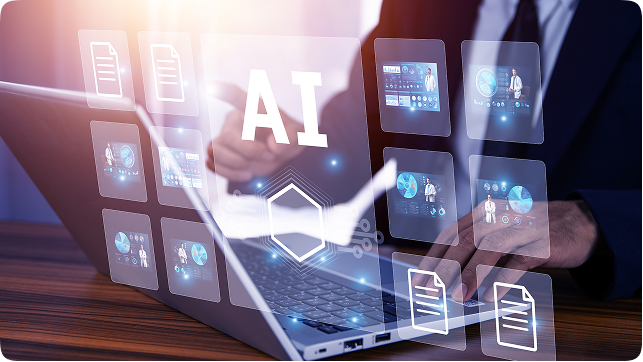The Role of Behavioral Analysis in Pre-Hire Decision Making
Hiring the right person can feel like a win, until they quit after a few months. Many companies have faced this headache: you spend weeks screening resumes, shortlisting the best match, and training them, only for them to leave just when they start adding value.
Why does this happen? It’s because skills and experience don’t always show if someone will stick around. Maybe they don’t like the work culture, the commute drains them, or their career goals don’t match the job.
Today’s AI tools can help fix this by reading between the lines. Instead of only looking at skills, AI can find hidden clues in a resume and online profiles that hint at how likely someone is to stay.
In this blog, let’s see how AI-based behavioral analysis works, and how it helps companies hire people who stay for the long haul.
Why Candidates Leave Sooner Than Expected
There’s no single reason why employees leave jobs early. Often, it’s a mix of personal, cultural, and motivational factors that traditional hiring processes fail to spot.
Personal Factors: Sometimes it’s just about distance or family needs. For example, if someone lives far away, a long daily commute can quickly become too tiring. Or their family situation might change, like a spouse moving to another city or kids needing a new school, and then the job no longer works well for them.
Mismatch with Work Culture: Imagine a candidate moving from a startup with flexible hours to a traditional corporate job with strict 9-to-5 timings. They might struggle to adapt to rigid schedules, more overtime, or tasks that demand constant multitasking. If their tolerance for work-life imbalance is low, they’ll likely burn out fast and leave.
Changing Interests and Goals: People’s interests change. Sometimes, a new hire realizes the job isn’t what they hoped for. Maybe they wanted creative work but got repetitive tasks instead. Or they discover the company’s goals don’t match what they care about. When that happens, they lose motivation and look for a better fit.
These reasons for leaving early often don’t show up on a resume or in a quick interview. Most hiring still looks only at skills and experience on paper but doesn’t check if the job really fits the person’s life or work style. This is why people sometimes leave soon after joining.

The Traditional Approach: Human Review
So how can companies catch these hidden signs before they make a job offer? This is where behavioral analysis steps in. It helps recruiters read between the lines and spot patterns that a simple resume or quick chat might miss.
Instead of just checking skills, this approach looks at how a candidate has moved through their career, what they care about, and how they’re likely to behave in a new job.
Work History Patterns: A closer look at past jobs can show trends, like how long someone stays in one place, how often they switch roles or industries, or whether they take steady steps up the ladder. These patterns can hint at whether someone is likely to stick around or move on quickly.
Inferred Interests and Values: What people share publicly, like articles, talks, or community posts, can reveal what matters to them. Do they care about innovation, teamwork, work-life balance, or growth? These clues help companies see if their culture matches the candidate’s priorities.
Personality Signals: Behavioral analysis also helps spot soft traits, like how adaptable, consistent, or growth-driven someone is. Understanding these traits early means companies can better judge whether the role will keep the person motivated and happy over time.
In short, behavioral analysis helps companies make smarter decisions before they make an offer, lowering the risk of hiring someone who leaves too soon.
How AI Performs Behavioral Analysis Using Resume and Public Data
Let’s look at how AI pulls all this together in practice.
a) Work History Patterns from Resumes
AI systems can parse resumes for facts like:
- Average tenure: Did the candidate stay at each job for years, or do they change every 8-12 months?
- Industry or location shifts: Do they keep switching industries, or are they loyal to a specific domain?
- Role progression: Did they grow steadily into higher positions, or is their path scattered?
For instance, if a sales manager has had five jobs in six years, AI might flag this as a sign they could leave early again, unless the new role offers unique growth or stability they haven’t found before.
b) Insights from Public Profiles and Online Presence
Today, professionals leave digital footprints everywhere, LinkedIn, Medium, GitHub, even Twitter. AI can analyze:
- Activity levels: Do they post thought pieces? Engage with groups related to specific industries?
- Interests: Are they following topics on remote work, company culture, or diversity?
- Branding: Do they position themselves as freelancers, entrepreneurs, or loyal corporate professionals?
For example, a developer who actively contributes to open-source communities likely values collaboration and freedom. A company that rigidly controls what employees can share publicly might be a poor fit.
AI combines these signals to score how closely a candidate’s online presence aligns with the company’s values.
c) Lifestyle and Contextual Alignment
This is where AI shines in piecing together context. Say your company’s office is in the city’s outskirts. If a candidate’s address is far away with no convenient public transport, AI can calculate likely commute times and flag if that could be a retention risk.
Likewise, by analyzing clues, for example, a resume that mentions moving cities for family or an online bio referencing caregiving responsibilities, AI can infer lifestyle preferences that might affect how well the job fits into their life.
The goal isn’t to intrude on privacy but to proactively ensure the role aligns with a candidate’s likely lifestyle needs.

Benefits of Using AI for Retention-Linked Hiring Decisions
Hiring the wrong person is costly, but losing them too soon costs even more. Did you know it can cost 30% to 50% of an employee’s annual salary to replace them if they leave early? Add in lost time, repeat hiring, and extra training, and it quickly drains a company’s budget.
This is why combining skills-based hiring with behavioral analysis is so powerful. It helps companies pick not just the most qualified people, but the ones who are most likely to stay.
Here’s how AI-driven insights make a real difference:
Better Quality Hires — Not Just on Paper: Having the right skills is just the starting point. The best employees are the ones who also fit the work style, culture, and pace. AI helps recruiters spot this match early, so new hires feel comfortable, motivated, and stay longer.
Lower Costs from Fewer Early Exits: Early exits are expensive. AI can spot red flags, like patterns that show a candidate changes jobs every year, so managers can dig deeper or plan better before hiring. This saves money that would otherwise be wasted on rehiring and retraining.
Smarter, Flexible Offers: Sometimes, AI finds great candidates who just need a few tweaks to stay happy, for example, someone who’s perfect for the role but has a long commute. Knowing this upfront lets companies offer hybrid work, flexible hours, or extra support to make the role more appealing.
Better Interviews with the Right Questions: Behavioral insights don’t replace interviews, they make them stronger. Instead of asking only about skills, hiring managers can ask questions that reveal real intentions.
Example: “I noticed you’ve changed industries a few times, what did you learn from that? What are you hoping to build next?”
Questions like this open honest conversations, so surprises are less likely after day one.
Limitations and Ethical Considerations
While AI offers powerful capabilities, it’s important to remember its use comes with responsibilities.
Privacy and Consent:
Candidates should know if their public data is being analyzed. Clear communication builds trust.
Transparency:
HR teams must be upfront about what data is used, how, and why. For instance, scraping personal social media or private messages crosses an ethical line.
AI as Support, Not Replacement:
No algorithm can fully capture human complexity. AI should never be the final decider, it’s best used as a smart assistant to support, not override, human judgment.
A hiring manager’s instincts, empathy, and understanding of company culture still matter deeply. AI simply gives them a better map.
Rethink Talent Fit with AI-Driven Behavioral Insight
The perfect hire isn’t just someone who has the right skills today. It’s someone who fits the company’s mission, culture, and environment, and who will stay, contribute, and grow alongside the team.
By adding AI-based behavioral analysis to your hiring toolkit, you can move beyond the surface of resumes and see the bigger picture: who the candidate is, what they value, and how likely they are to thrive long-term.
Smart companies already use AI to find skills. Now, it’s time to use it to find staying power too.
Ready to make better hiring decisions with AI? Connect with us today and see how behavioral insights can cut early exits for good.
Enhancing your workflow through
AI integration is key to future success.
processes and improve efficiency!
I design and refine AI solutions that make workflows smarter and turn data into actionable insights. With expertise in OCR, deep learning, and computer vision, I focus on translating complex concepts into reliable, scalable systems that solve real-world problems and create measurable value.





